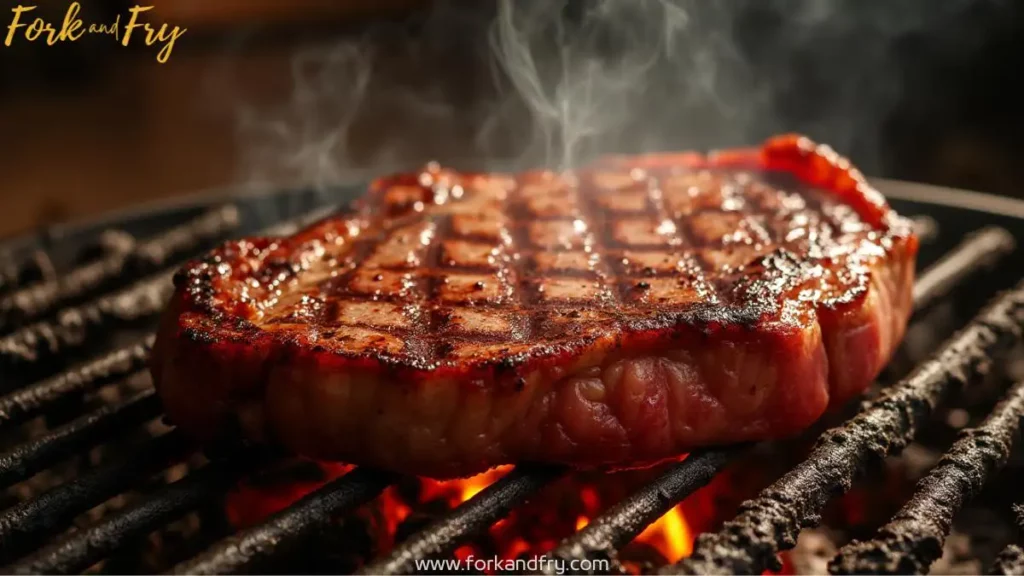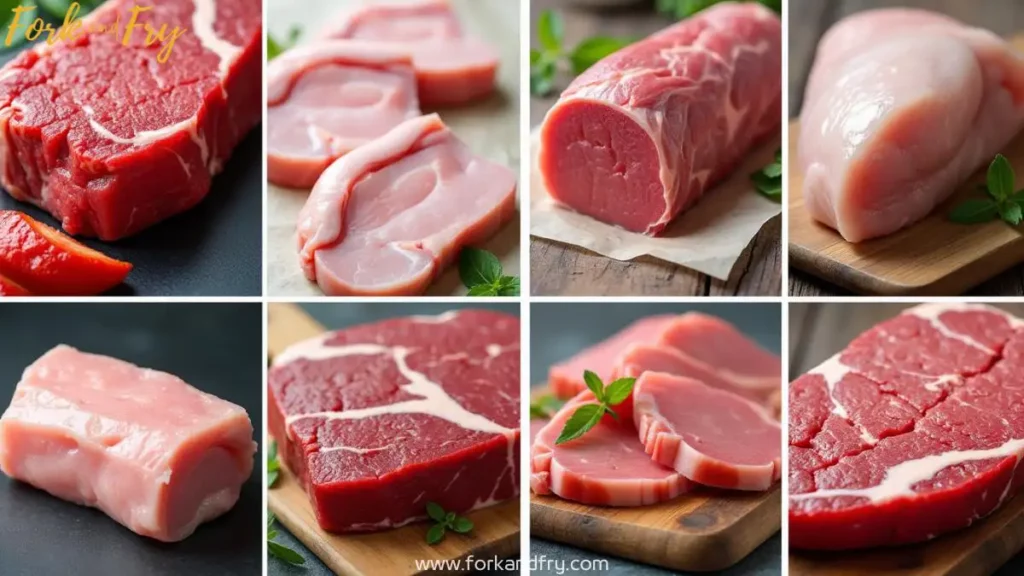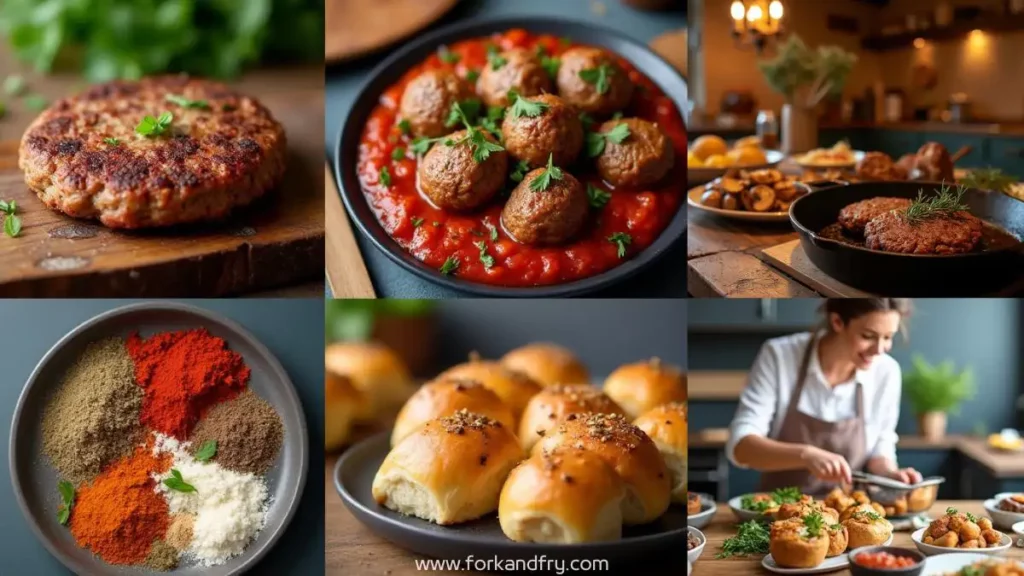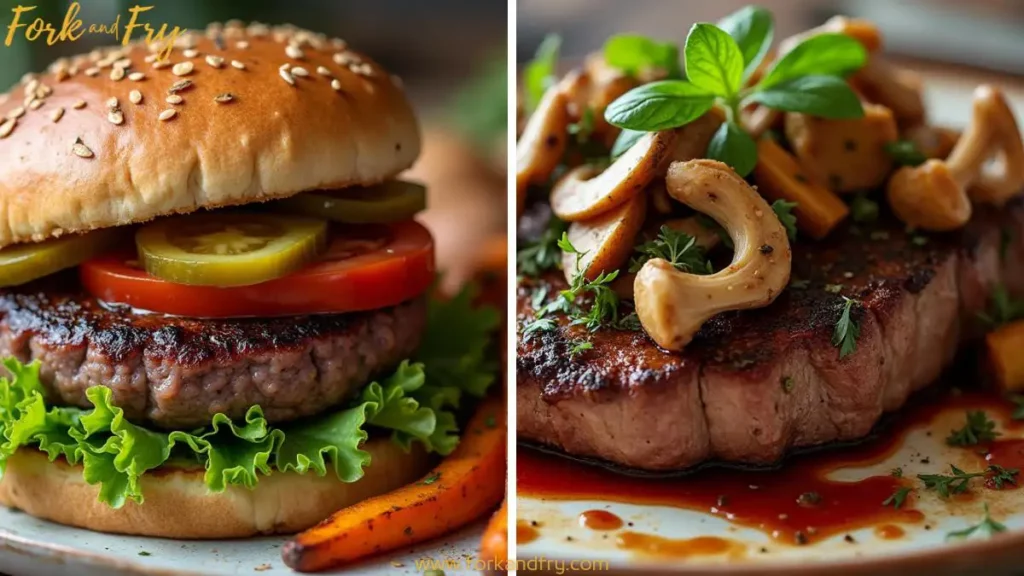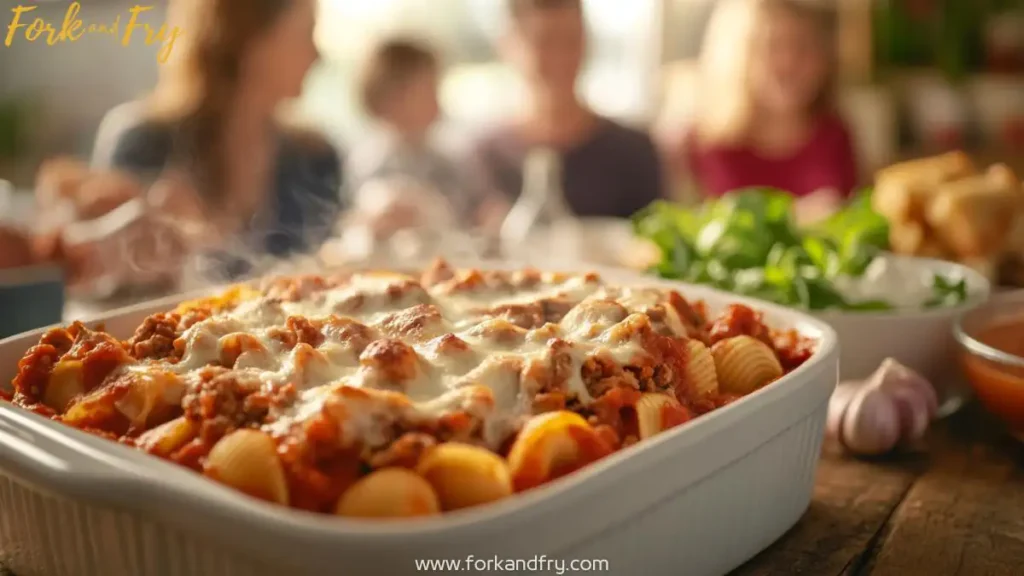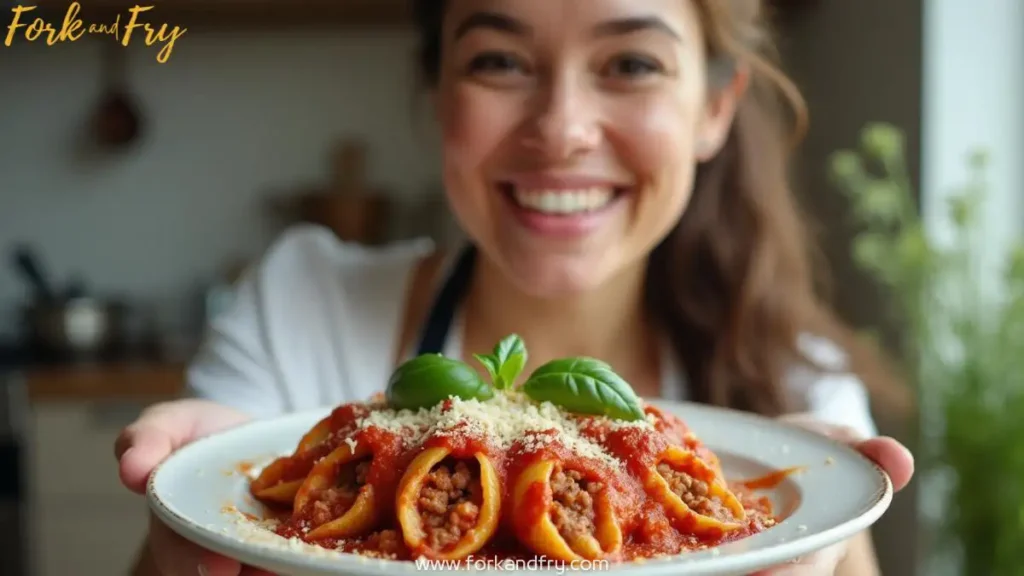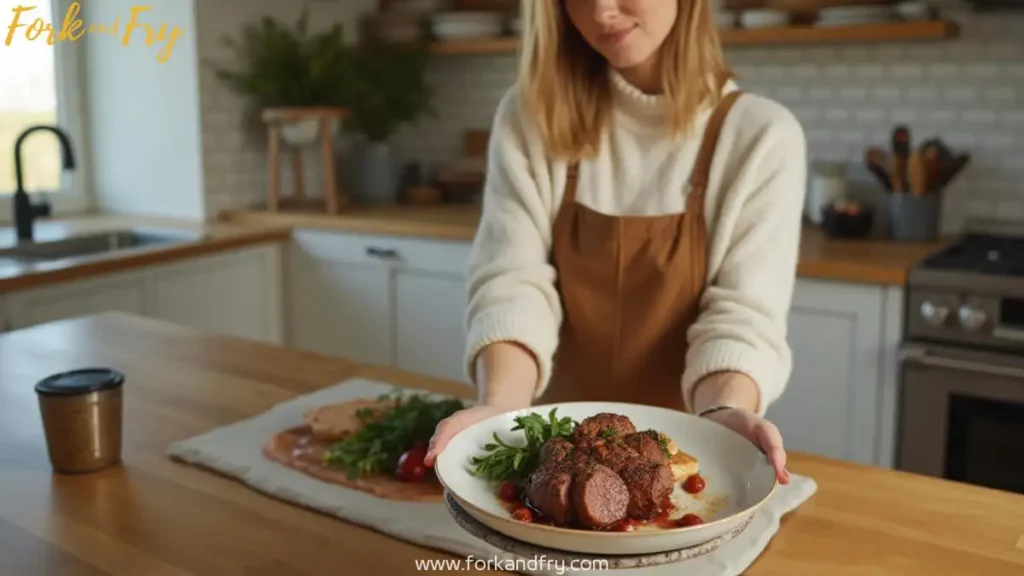Last updated on February 11th, 2025 at 08:28 pm
Table of Contents
One sunny afternoon, I was wandering through a bustling farmer’s market. A tantalizing aroma caught my attention. I followed the scent to a grill station where a chef was flipping juicy meat.
I was intrigued by the sizzling sound and the delicious smell. I asked the chef about the dish. He smiled and introduced me to beef flap meat.
The chef said beef flap meat is a hidden gem. It’s loved by chefs and home cooks for its affordability and versatility. This cut comes from the bottom sirloin and is known for its robust flavor and tenderness.
It’s often mistaken for flank steak or hanger steak. But beef flap meat has its own unique qualities.
I love trying new things in the kitchen. I was excited to try beef flap meat. It’s found in restaurants worldwide, from France to Argentina.
It’s a favorite for dishes like carne asada and tacos in Mexico.
Wondering how to cook beef flap meat? It can be grilled, pan-seared, or slow-cooked. It suits any cooking style.
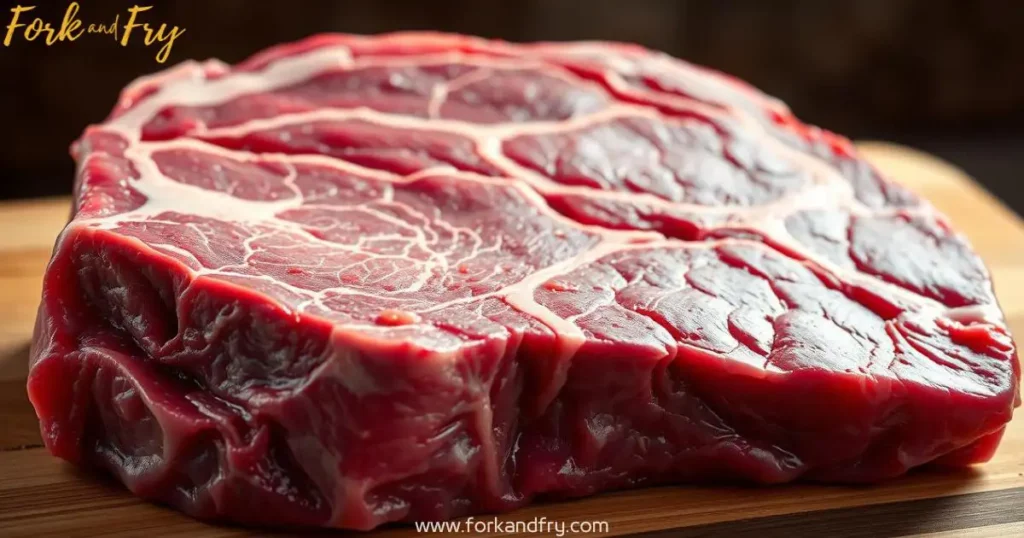
Key Takeaways
- Beef flap meat is an economical and versatile cut cherished by chefs and home cooks.
- It originates from the bottom sirloin section and offers a unique flavor profile.
- This cut is popular worldwide, appearing in dishes such as carne asada and steak tips.
- Grilling, pan-searing, and slow-cooking are excellent methods to prepare beef flap meat.
- With approximately 196 calories per 100 grams, it is a leaner choice compared to ribeye steak.
- Beef flap meat benefits from marination to enhance its tenderness and flavor.
PODCAST – who likes to listen
Listen to the Podcast
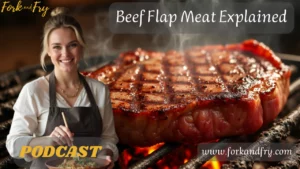
November 30, 2024 · Season 2 : Chop and Pop · Episode 8
19 Min · By Sophia B.
Learn everything about beef flap meat, including its flavor profile, best cooking methods, and why it’s a great addition to your meals.
Beef Flap Meat Explained: Flavor, Uses, and Cooking Tips
Learn everything about beef flap meat, including its flavor profile, best cooking methods, and why it’s a great addition to your meals.
What is Beef Flap Meat?
Beef flap meat, also known as flap steak, comes from the bottom sirloin of a cow. It’s famous in French cuisine as ‘bavette’ and in South American dishes. This cut is loved for its deep, beefy taste when cooked right.

Origin and Location
The flap meat cut comes from the cow’s bottom sirloin. It’s not as well-known as cuts like ribeye or sirloin tip. But, it has its own special place in cooking.
It’s often mixed up with skirt steak because of its chewy look. But, flap meat is from the cow’s mid-back, while skirt steak is from the plate area.
Characteristics
Flap meat is known for being chewy and marbled. This makes it tender and juicy when grilled or pan-seared. It’s great for dishes with lots of flavor, like fajitas or sandwiches.
Its marbled texture adds to its rich taste. Marinating it for 4 to 6 hours makes the meat even tastier and tenderer. This makes for a wonderful eating experience.
| Cut | Calories (per 100g) | Protein | Fat |
|---|---|---|---|
| Flap Meat | 196 | 6g | 5g |
| Ribeye | 254 | 7g | 20g |
The Unique Flavor Profile of Beef Flap Meat
Beef flap meat is special because of its unique flavor profile. It comes from the lower sirloin and is known for its tender texture. If you love deep meat flavors, you’ll love beef flap meat!
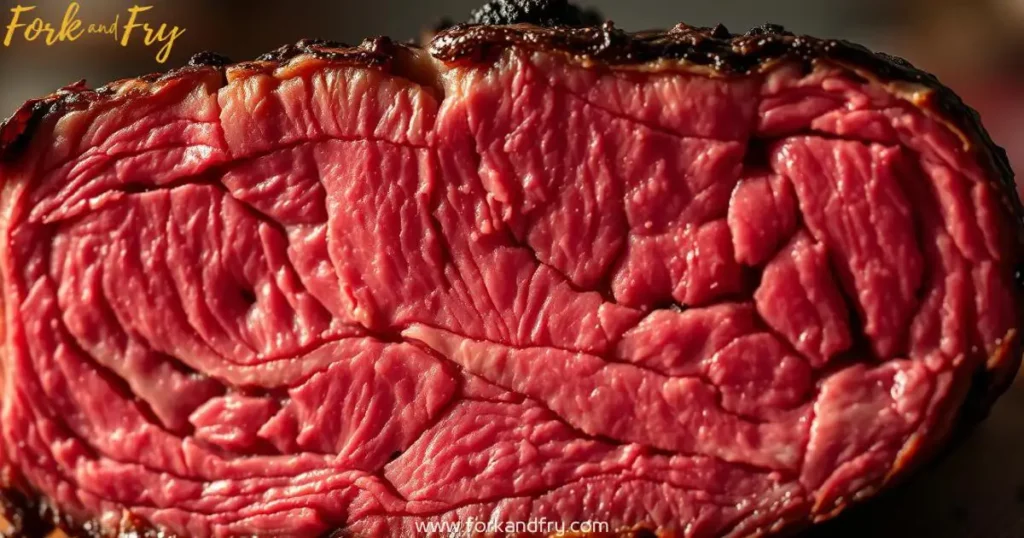
The fat in flap steak adds to its rich taste. It’s fattier than flank steak, making it juicier. This fat content brings out the beef’s natural taste, great for grilling or marinades.
Beef flap meat is amazing with marinades. Its loose fibers soak up flavors quickly. Even a short 30-minute soak in olive oil, garlic, and soy sauce can make a big difference. Longer marinating times, like 2 hours, can make it even better.
But marinades aren’t everything. Cooking techniques matter too. Use high heat, like grilling or pan-searing, to bring out the best. For a perfect medium-rare, cook to 130°F to 135°F. Pat the meat dry before cooking to get a nice crust.
Adding the right spices can also enhance the flavor. Try chili flakes or butter during cooking for an extra kick.
This cut is also affordable, making it a great choice. Its unique flavor profile and low price make it a must-try for any food lover.
How to Cook Beef Flap Meat
If you’re eager to explore methods on how to cook beef flap meat, you’re in for a treat! This section delves into three diverse cooking techniques that will bring out the best in this flavorful cut: grilling, pan-searing, and slow-cooking.
Grilling
Grilling flap meat is a fantastic way to achieve an exquisite char. Begin by marinating your meat for 8 to 24 hours. Use a blend of olive oil, low-sodium soy sauce, red wine, apple cider vinegar, and lime juice to enhance its tenderness and flavor.
- Preheat your grill to medium-high heat.
- Remove the flap meat from the marinade and let any excess drip off.
- Grill for 4-6 minutes per side, aiming for an internal temperature of 130-135°F for medium-rare.
- Let the meat rest for 10 minutes before slicing against the grain to ensure maximum tenderness.
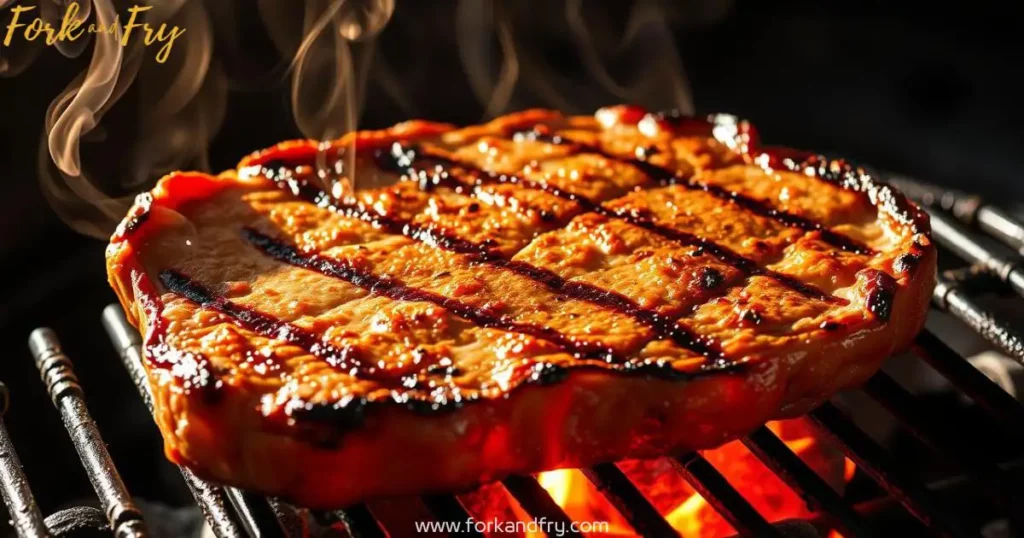
Pan-Searing
Pan-searing flap meat is ideal for creating a caramelized crust. This method is quick and allows the meat’s rich flavors to shine through.
- Heat a cast-iron skillet over high heat until smoking hot.
- Season the flap meat with salt, pepper, and any desired herbs or spices.
- Place the meat in the skillet, searing for 1.5-2 minutes on each side to achieve a crusty exterior.
- Finish by roasting in a preheated 375°F oven for another 10-12 minutes if a thicker cut, for medium-rare.
- Allow the steak to rest for 10 minutes before slicing.
Slow-Cooking
Slow-cooking flap meat is an excellent method for achieving ultimate tenderness. Perfect for creating shredded beef dishes.
- Place the seasoned flap meat in a slow cooker along with your choice of vegetables and broth.
- Cook on low for 6-8 hours or until the beef is tender and easily pulled apart with a fork.
- Remove the meat from the cooker, shred it, and return it to the pot to soak up more of the flavorful juices.
- Serve on warm tortillas for a mouthwatering beef taco experience.
With these techniques, grilling flap meat, pan-searing flap meat, and slow-cooking can transform this versatile cut into a culinary masterpiece. Enjoy the adventure of discovering which method becomes your favorite go-to for delicious beef flap meat!
Flap Meat vs. Other Beef Cuts
When comparing beef cuts, it’s key to know their origins and uses in cooking. Let’s look at the differences between flap meat, skirt steak, and flank steak. We’ll focus on texture, taste, and how to cook them.
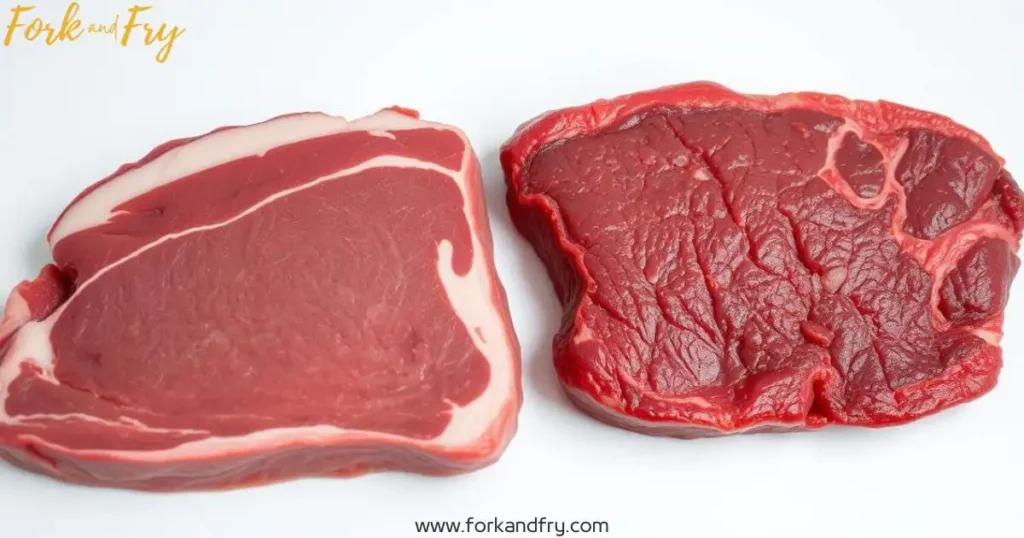
Flap meat comes from the bottom sirloin butt. Skirt steak is from the plate, between the brisket and flank. Flank steak is from the cow’s belly muscles, making it tougher.
Flap meat is softer because of its fat marbling. This makes it tender and flavorful. Skirt steak has a coarse grain and strong flavor. It’s thinner than flap meat.
Flank steak is tougher and needs careful marination and slicing. This makes it tender.
Flap meat is great for steak tacos, carne asada, and stir-fries. It’s also good as a skirt steak substitute. Skirt steak is loved for its flavor in Mexican and South American dishes. Flank steak is used in London broil and needs to be sliced at a 45-degree angle.
Cooking these cuts needs high heat. Cook flap and skirt steaks to medium-rare. Skirt steak should be around 125°F. Flap meat should be flipped often during grilling. Flank steak needs attention to avoid overcooking.
To summarize their main differences:
| Attribute | Flap Meat | Skirt Steak | Flank Steak |
|---|---|---|---|
| Origin | Bottom Sirloin Butt | Plate Section | Abdominal Muscles |
| Texture | Softer with Marbling | Coarse and Beefy | Coarse and Lean |
| Flavor | Buttery | Strong and Beefy | Intense Beef Flavor |
| Common Dishes | Tacos, Stir-Fries, Carne Asada | Fajitas, Grilled Dishes | London Broil, Stuffed Steaks |
| Cooking Methods | High Heat, Frequent Flipping | High Heat, Avoid Overcooking | High Heat, Medium Rare |
Best Flap Meat Recipe Ideas
Creating the best flap meat recipes is all about being creative. You can grill up Carne Asada, make succulent steak tips, or even flap meat tacos. There’s no end to what you can do with beef flap meat. Let’s look at some tasty beef flap meat recipes that will be hits at home.
Carne Asada
Carne Asada is a classic Mexican dish that highlights flap meat. Use a 3-pound Bavette steak, marinating it for at least an hour or up to 24 hours for the best taste. Mix ¾ cup soy sauce, ½ cup rice vinegar, ½ cup honey, and 12 seasonings like Sriracha and ginger for the marinade.
Grill the meat for 4 to 5 minutes on each side for medium-rare, aiming for 125°F inside. Let it rest for 3 to 5 minutes before slicing.
Steak Tips
Steak tips are a quick and tasty dinner option. Cut the flap meat into 2-inch strips and marinate for 4-6 hours. Sear the tips on a hot grill or pan for 2 minutes on each side, getting them charred outside and juicy inside.
Serve with jasmine rice, which is fluffy and fragrant, matching the beef’s rich flavors. This recipe is a protein-packed meal ready in no time!
Flap Meat Tacos
Beef flap meat tacos are irresistible. Marinate the meat for at least 30 minutes, longer if you can. Then, grill it for 4 minutes. Slice the meat into thin strips and fill warm tortillas with pico de gallo, avocado, and cilantro.
Each taco is a flavor explosion, making it a great dish to share with loved ones.
With a bit of creativity and the right ingredients, beef flap meat can become many delicious dishes. From Carne Asada to steak tips and tacos, the options are endless. Try these recipes and unlock the savory possibilities of flap meat in your kitchen!
| Recipe | Ingredients | Marinating Time | Cooking Time | Servings |
|---|---|---|---|---|
| Carne Asada | Soy sauce, rice vinegar, honey, seasonings | 1-24 hours | 4-5 mins/side | 8 |
| Steak Tips | 2-inch wide strips of flap meat, jasmine rice | 4-6 hours | 4 mins | 6-8 |
| Flap Meat Tacos | Flap meat, tortillas, toppings | 30 mins – 6 hours | 4 mins | 6-8 |
Flap Meat vs. Flank Steak
Choosing between flap meat and flank steak depends on understanding their differences. These include texture, flavor, and how to cook them. Knowing these can help you pick the right cut for your dishes.
Texture Comparison
Flap meat, or bavette steak, is juicy and slightly coarse. It’s great for stir-fries, sandwiches, and steak dinners. Its marbling makes it tender and enjoyable to eat when cooked right.
Flank steak, on the other hand, is more fibrous and tough. It needs marinating to soften its bite. This makes it tenderer.
Flavor Comparison
Flap meat has a rich, beefy taste from its marbling. It’s flavorful but not too strong, making it versatile. Flank steak, being leaner, has a stronger beef flavor. This flavor shines when grilled or seared.
Cooking Methods
Flap meat is best grilled, broiled, or pan-seared. These methods keep it juicy and tender. It doesn’t need much seasoning, making it quick to prepare.
Flank steak, being tougher, needs marinating and quick cooking over high heat. Grilling or broiling it enhances its flavor and prevents toughness.
| Aspect | Flap Meat | Flank Steak |
|---|---|---|
| Texture | Juicy and slightly coarse | Fibrous and tougher |
| Flavor | Rich, beefy taste | Robust, pronounced beef flavor |
| Best Cooking Methods | Grilling, broiling, pan-searing | Marinating, grilling, broiling |
Understanding texture, flavor, and cooking methods helps you choose between flap meat and flank steak. This ensures your dishes turn out great every time.
Flap Meat vs. Skirt Steak
Flap meat and skirt steak have different textures, flavors, and cooking methods. Each offers a unique taste experience. They are best for different dishes because of their distinct qualities.
Texture and Marbling
Flap meat, also known as flap steak or bavette steak, is lean and soft. It comes from the bottom sirloin butt and is very marbled. This makes it tender.
Skirt steak, from the diaphragm region, has a rich flavor and a bit chewy texture. Its grain and fat content make it perfect for certain dishes. Flap meat works well for grilling and broiling.
Flavor Profiles
Flap meat and skirt steak have their own flavors. Flap meat is tasty and soft, great for carne asada and tacos. Skirt steak, with its strong beefy taste, is best in fajitas and dishes needing bold flavor.
Both are flavorful, but skirt steak’s beefiness is more intense.
Cooking Techniques
Knowing how to cook steak is key. Flap meat and skirt steak both need high-heat cooking for the best taste and texture. Grilling, pan-searing, or broiling flap meat is good for even cooking and taste.
Skirt steak is best cooked over high heat and marinated to tenderize and enhance flavor. Cook both to medium rare—125 degrees Fahrenheit for skirt steak—to keep them juicy and tender.
Exploring the differences and cooking techniques for steak helps you enjoy flap meat and skirt steak. You’ll make better choices for your next meal!
Flap Meat vs. Hanger Steak
Choosing between flap meat and hanger steak depends on several factors. We’ll look at texture, flavor, and cooking methods. This will help you pick the best option for your meal.
Texture Differences
Flap meat is great for tacos and stir fry because of its fine grain and marbling. Hanger steak, known as “butcher’s steak,” has more marbling and a robust texture. It’s rarer and thicker than flap meat.
Both cuts should be sliced thinly to be tender. But hanger steak is usually thicker and shorter than flap meat.
Flavor Differences
Flap meat has a rich, beefy taste that works well with many flavors. Hanger steak, with its high fat content, offers a more intense flavor and juiciness. It’s perfect for those who want a richer taste.
Cooking Preferences
Your cooking style affects your choice between flap meat and hanger steak. Both are best cooked at high temperatures to stay tender. Flap meat is quick to grill, making it great for weeknights.
Hanger steak, though, should be cooked to medium-rare. This keeps it tender and prevents toughness. Knowing these differences helps you choose the right cut for your next meal.
Where to Buy Beef Flap Meat Online
Finding the best place to buy beef flap meat online is key for top-quality cuts. Buying online opens a world of premium options and home delivery. Let’s look at some top online butchers and suppliers for the best beef flap meat.
Look for suppliers that focus on where they get their meat. Snake River Farms and ButcherBox are known for their high-quality sources. For example, meat from Pure Black’s Black Barley-Fed Angus cattle is tender and flavorful.
- Source of the Meat: Choose brands that clearly state their meat sources. This ensures better taste and quality.
- Packaging and Shipping: Make sure the meat is vacuum-sealed and shipped well to stay fresh.
- Customer Reviews: Read reviews from other cooks. They can tell you about the meat’s quality and consistency.
Here’s a quick look at some popular online meat suppliers:
| Supplier | Highlights | Marbling Quality | Price Range |
|---|---|---|---|
| Snake River Farms | American Wagyu, Black Angus | High | $$$ |
| ButcherBox | Free-range, Grass-fed | Moderate | $$ |
| Pure Black Beef | Black Barley-Fed Angus | Superior | $$ |
Buying beef flap meat online from these suppliers means quality and convenience. Remember, meat with superior marbling and tenderness makes dishes that wow. Now you know where to find the best beef flap meat online, happy cooking!
Flap Meat Nutrition Facts
Flap meat is a great choice for those who want to eat well and stay healthy. It’s packed with nutrients that make it a nutritious option.
Caloric Content
Flap meat is lean, which is good for a diet high in protein. A 4-ounce serving has about 220 calories. The exact number can change based on how it’s cooked.
Macronutrients
Flap meat has the right mix of macronutrients to keep you going. Here’s what you get in a serving:
- Protein: 24 grams – great for building and fixing muscles
- Fat: 13 grams – mostly good fats that are good for your heart
- Carbohydrates: 0 grams – perfect for those watching their carbs
Vitamins and Minerals
Flap meat is also full of vitamins and minerals. Here’s what you’ll find:
| Nutrient | Amount per Serving | Benefits |
|---|---|---|
| Iron | 2.6 mg | Helps make red blood cells |
| Zinc | 5.1 mg | Boosts your immune system |
| Vitamin B12 | 1.4 µg | Good for your nerves and blood cells |
| Phosphorus | 180 mg | Important for strong bones and energy |
Adding flap meat to your meals can bring many health benefits. Knowing about flap meat nutrition helps you make better food choices.
Tips for Marinating Beef Flap Meat
Marinating beef flap meat is key to unlocking its bold flavors and tender texture. This process makes the meat moist and succulent when cooked. Follow these tips to elevate your cooking.
Basic Marinade Recipe
Making a marinade for beef is simple yet powerful. Here’s a basic marinade guide for beef flap meat:
- Combine Ingredients: Mix 1/3 cup apple cider vinegar, 1/4 cup olive oil, 1 medium shallot (chopped), 4 garlic cloves (minced), 3 tablespoons chopped rosemary, 3/4 cup orange juice, 1/2 cup soy sauce, 1 tablespoon chili powder, 1 tablespoon ground cumin, 1 tablespoon ground paprika, 1 tablespoon ground black pepper, 1 teaspoon finely chopped canned chipotle pepper, and 1 teaspoon dried oregano.
- Mix Well: Whisk the ingredients together until they are well combined.
- Marinate the Meat: Place 2 pounds of beef flap meat into a resealable plastic bag or a shallow dish. Pour the marinade over the meat, ensuring it is fully coated.
- Seal and Refrigerate: Seal the bag or cover the dish with plastic wrap. Refrigerate for at least 2 hours or up to 8 hours for optimal flavor penetration.
Marinating Times
Getting the marinating time right is essential for flavor and tenderness. Here’s a quick guide:
- Minimum marination time: 1 hour
- Recommended marination time: 2-8 hours
- Maximum marination time: Up to 12 hours for deep flavor infusion
Tip: Over-marinating can make the meat mushy, so aim for 6-8 hours. This keeps the meat tender but not too soft.
Common Marinade Ingredients
Knowing the role of each ingredient in your marinade recipe for beef helps you experiment. Here’s a breakdown of common ingredients and their contributions:
- Acids: Vinegar, lemon juice, lime juice, and orange juice help tenderize the meat.
- Oils: Olive oil adds flavor and keeps the meat moist during cooking.
- Herbs and Spices: Rosemary, garlic, chipotle pepper, chili powder, cumin, paprika, and black pepper add depth and complexity to the flavor profile.
- Savory Elements: Soy sauce and shallots provide umami and enhance the overall taste.
By following these tips and techniques for marinating beef flap meat, you can ensure each bite is packed with flavor and perfect tenderness. Experiment with different ingredients to find your signature marinade! Happy cooking!
How to Properly Store Beef Flap Meat
Keeping your beef flap meat fresh is key, whether you’re using it now or later. We’ll show you the best ways to store it. This way, it stays fresh, tasty, and safe.
Refrigeration Tips
For storing beef flap meat in the fridge, keep it cold and steady. Here are some tips:
- Wrap it tightly: Use plastic wrap or aluminum foil to keep air out and moisture in, preventing spoilage.
- Store it in the coldest part: Typically, this is the back of the fridge. Keep your beef flap meat here to maintain its freshness.
- Use within 3-5 days: For best results, cook or freeze within this timeframe.
Freezing Guidelines
If you don’t plan to use your beef flap meat right away, freezing is a great option. Follow these steps for the best results:
- Double-wrap the meat: Use plastic wrap first, then place it in a zip-top bag or vacuum-seal it to prevent freezer burn.
- Label and date: Always mark the date of freezing so you can keep track of its storage duration.
- Use within 6-12 months: While beef flap meat can last longer, it’s best used within this period for the finest quality.
Safe Thawing Methods
When defrosting your beef flap meat, use a safe method. This keeps its quality and prevents foodborne illnesses:
- Refrigerator thawing: Plan ahead by placing the meat in the fridge for 24 hours per pound.
- Cold water thawing: If you need it quicker, submerge the wrapped meat in cold water, changing the water every 30 minutes.
- Microwave thawing: Use the defrost setting on your microwave, but cook immediately after thawing to prevent uneven cooking.
| Storage Method | Duration |
|---|---|
| Refrigeration | 3-5 days |
| Freezing | 6-12 months |
By following these guidelines, you can be confident that your beef flap meat will remain fresh and flavorful. It’s ready for your next delicious meal!
Conclusion
We’re ending our beef flap meat guide with a big thank you for this amazing cut! You’ve learned about its special flavor and great value. It’s perfect for grilling, pan-searing, or slow-cooking, making it a must-try in your kitchen.
Marinating with olive oil, garlic, herbs, and citrus juice can make flap meat even better. It’s a budget-friendly choice that’s also healthier than other cuts. Plus, it’s lower in fat but full of flavor.
Now you’re all set to try cooking flap meat and have fun with it. Just remember, confidence and a sense of adventure are key. So, get ready to grill, pan-sear, or slow-cook your way to a delicious meal. Happy cooking!
FAQ
What is beef flap meat?
Beef flap meat, also known as flap steak, comes from the bottom sirloin. It’s known for its rich flavor and versatility in cooking.
What are the characteristics of flap meat cuts?
Flap meat cuts are long and thin with a coarse grain. They have a lot of marbling, making them tender when cooked right.
How do I cook beef flap meat?
You can grill, pan-sear, or slow-cook beef flap meat. Each method brings out its unique flavors and textures. For grilling, cook on high heat for a few minutes per side. For pan-searing, use a hot skillet with minimal oil. Slow-cooking requires a low temperature and longer time for tender results.
What makes beef flap meat’s flavor unique?
Beef flap meat has a distinct, beefy flavor. This is enhanced by its marbling. The fat content keeps the meat juicy and flavorful during cooking.
How does flap meat compare to skirt steak?
Flap meat and skirt steak are similar in texture but differ in flavor and marbling. Flap meat is more tender and has a richer, beefier flavor than skirt steak.
Can you recommend some flap meat recipes?
Absolutely! Popular recipes include Carne Asada, steak tips, and flap meat tacos. These dishes highlight the meat’s tenderness and flavor.
What’s the difference between flap meat and flank steak?
The main differences lie in texture and cooking methods. Flank steak is leaner and often used in dishes that require slicing against the grain. Flap meat is more tender and versatile in various cooking styles.
How does flap meat differ from hanger steak?
Flap meat is more marbled and tender, whereas hanger steak has a stronger flavor. The cooking preferences also vary, with hanger steak often being cooked to medium rare to preserve its texture.
Where can I buy beef flap meat online?
You can buy beef flap meat from online butchers and meat delivery services like Crowd Cow and Omaha Steaks. These platforms provide quality cuts delivered to your doorstep.
What are the nutritional facts of flap meat?
Beef flap meat is a good source of protein and fats. It contains essential vitamins and minerals like iron and vitamin B12. It’s moderately caloric, making it a nutritious choice when enjoyed in balanced portions.
What are some tips for marinating beef flap meat?
For marinating beef flap meat, start with a basic marinade recipe using olive oil, garlic, lime juice, and salt. Allow the meat to marinate for at least 30 minutes but preferably up to 24 hours. Common ingredients include soy sauce, Worcestershire sauce, and fresh herbs.
How should I store flap meat?
Store beef flap meat in the refrigerator if you plan to use it within a few days. For longer storage, freeze it in an airtight container. When thawing, do so in the refrigerator for best results.
